Divided We Scroll: The U.S. is Split on Banning TikTok
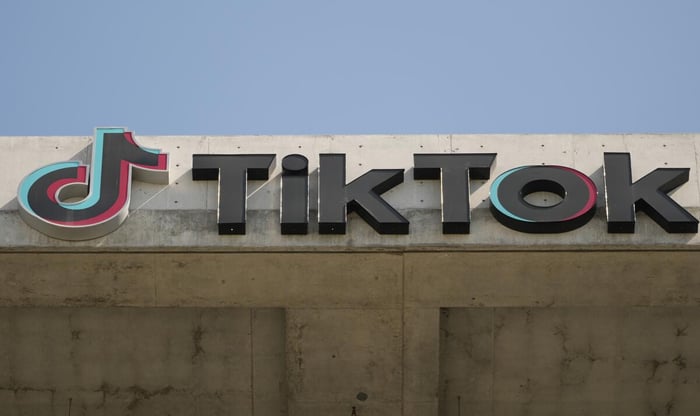
Tens of millions of Americans scroll through TikTok every day, but the app's future is uncertain. The US government is considering legislation that could result in banning TikTok from app stores and web hosting services due to national security concerns. Will it happen? We surveyed over 1,000 Americans to understand how they feel about a potential ban.
Key Takeaways
- The nation is divided: A narrow majority (51%) favors the TikTok ban, but a significant portion (37%) opposes it.
- Age matters: Older generations overwhelmingly support this bill. 70% of Baby Boomer respondents support the ban. In contrast, only 35% of Gen-Z support it.
- Non-Users want to ban: Two-thirds of TikTok Non-Users support the ban.
- Business lifeline: There's broad agreement (63%) that TikTok benefits small businesses. This could be a persuasive argument against the ban.
- Reversed Politics: Former President Trump has stated he opposes this ban. President Biden has indicated he would sign it. But in our poll, Trump Voters supported the ban more than Biden voters did.
The public is evenly divided on this issue
Overall, the public is greatly divided on this issue. 51% support the TikTok Divestment/Ban, 13% are undecided, and 37% are opposed.
In addition to the broader public, we also sampled "Opinion Elites." These are defined as high income, high education, high news attention, and high political involvement. These "Opinion Elites" may have a greater impact on political discourse. They had slightly less support for this bill than the overall public: 48% supported and 42% opposed.

Older Americans overwhelmingly support the ban
Age was one of the most important factors in determining support or opposition to this bill. Younger generations oppose the bill, whereas older generations overwhelmingly support it. This largely matches the age distribution usage patterns for TikTok. In addition, younger people are more likely to have friends who use and love TikTok, even if they themselves are not on it.
Nearly all of the support for this ban is driven by people over 40. Almost all Members of Congress are also part of these generational cohorts, which may explain why the ban passed with so much support and little debate. In order to turn the tide, TikTok may need to persuade these older Americans to oppose this bill. On the flip side, to win more support, supporters need to persuade younger generations that this divestment & ban are necessary.
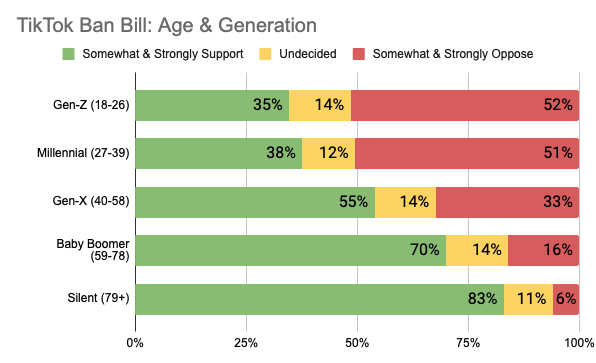
TikTok Non-Users are major supporters of the ban bill
As you might expect, 67% of people who don't use TikTok support this ban. In contrast, 52% of TikTok Users oppose the ban. If TikTok wants to successfully fight this bill, they need persuade non-Users that they do not deserve this regulation.
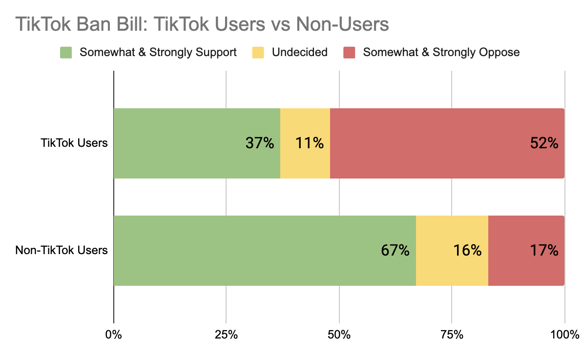
Americans agree that TikTok has a positive impact on small businesses
One of the primary arguments that TikTok is seeking to make is that TikTok is vital for small businesses. We found that overall, there is a great deal of agreement with this claim. 63% of all respondents said TikTok had a positive effect on small businesses. 69% of Opinion Elites said the same.
Across all demographic groups, 20% to 30% more people say that TikTok is positive for Small Businesses than oppose the bill. If TikTok can move these people to opposing the ban, they could quickly reach a majority of Americans. On the other hand, the Bill's supporters need to convince Americans that banning TikTok won't harm small businesses.

Conservatives are more likely to support the bill
While the TikTok ban bill vote was largely bipartisan in the House of Representatives, we found a slight partisan effect on support and opposition to this bill. Trump voters were more likely to support it, whereas Biden voters were largely split. 61% of Trump voters support this bill, and only 46% of Biden voters do.
President Biden has indicated that he would sign this bill if it came across his desk. Our results suggest that nearly half of his voters would oppose that action.
In addition, Donald Trump has said that he opposes this bill. He announced his opposition just hours before the final vote in the House of Representatives, so it is unlikely that his opposition has had much effect on public opinion yet. However, he may be a factor if this issue continues to be debated. He may move his voters to oppose the bill.
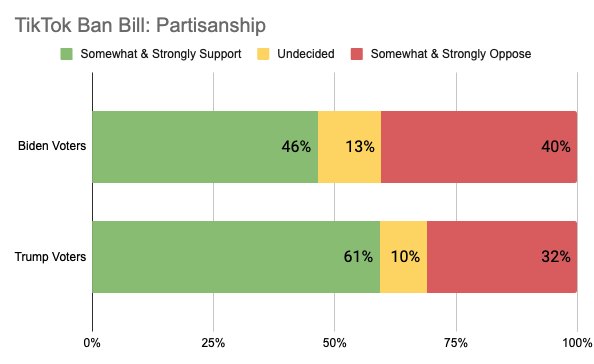
Non-White respondents are more likely to be Undecided
We found some variation in how different ethnic groups reacted to this bill. 52% of White respondents supported the bill. Non-White respondents were between 43% and 47%, depending on the specific group. However, Non-White respondents were much more likely to be undecided on this issue. Approximately 20% of Non-White respondents were undecided. This presents a key open question in this debate. Will Non-White voters move toward supporting or opposing this bill?
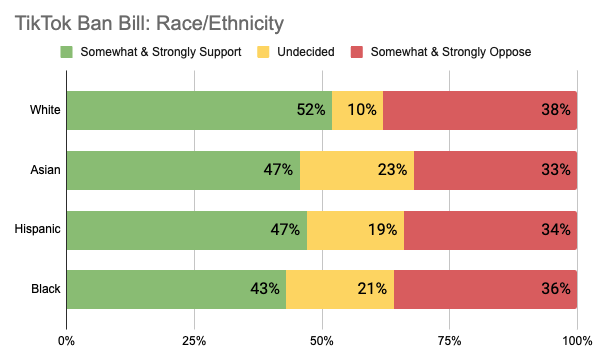
With a divided public and the economic impact on small businesses to consider, the fate of TikTok remains uncertain. In our next article, we'll share results from the Randomized Controlled Trial we ran to determine which arguments were most persuasive to these key demographic groups.
Subscribe to our blog and Book a Demo (top of this page) to learn more!
Methodology
This survey was conducted on Swayable over 24 hours between March 15 and 16 with responses from 1,022 U.S. consumers. Questions were asked of a general population sample aged 18+, using Swayable’s proprietary online platform.
The sample frame is U.S. smartphone users in all 50 states with active internet connections who are users of popular mobile and web apps that make up Swayable’s network of respondent partners. Respondents are solicited from partner apps with non-monetary reward offers for their participation. Respondents were recruited with an approximately even ratio of men and women imposed via separate quotas for each. This is a “non-probability sample” (in the conventional terminology of public opinion research, although this team’s position is that this concept is not meaningful since truly random sampling of the population is not possible via any methodology). To correct for over/under-sampling, all samples are post-stratified to the general U.S. population using cross-tabulations accounting for factors including age, ethnicity, gender, educational attainment and geography, based on the latest available data from the U.S. Census Bureau and Swayable’s proprietary population modeling. Margins of error quoted are based on response distribution statistics and sample sizes and are calculated independently for each given result.
This research was conducted and self-funded by Swayable.
